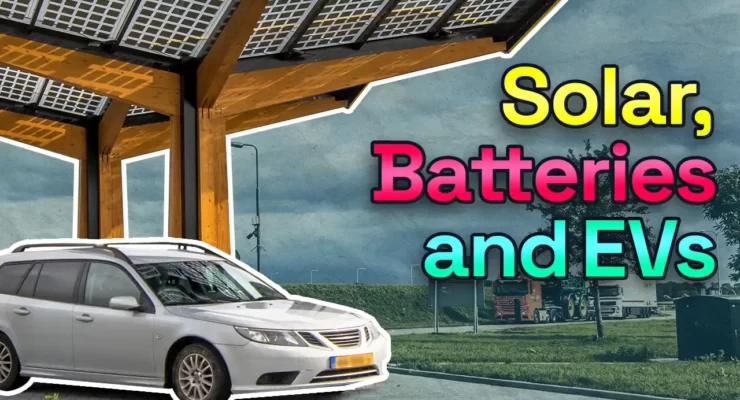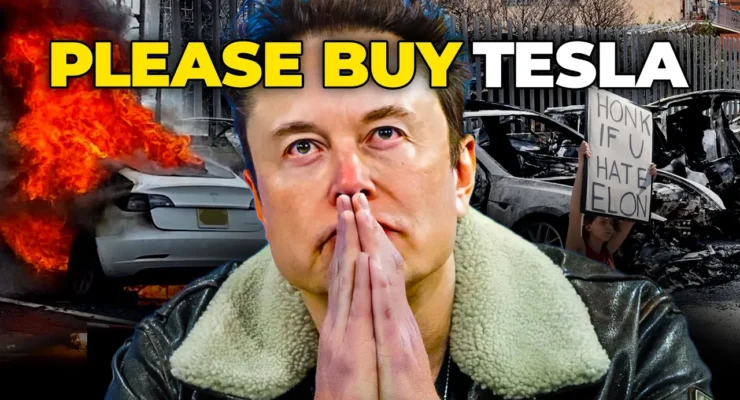
Fast read
To reduce our reliance on fossil fuels and reduce greenhouse gas emissions, we can use solar and other renewable energy to charge our electric vehicles.
If we were to charge with solar PV systems and batteries this would allow us to reduce our dependence on non-renewable energies like coal and gas and would slow down climate change.
For those wanting to change their ways of charging and want to use solar to charge their EV there are multiple ways in which this can be achieved.
The main and most popular way is through solar panels in your home or business. Alternatively, you can install community solar farms or even immensely large ones in remote areas and channel the power to public EV charging stations, allowing many drivers to shift towards a cleaner future.
Can I charge my electric vehicle with solar panels?
Solar energy and electric vehicles (EVs) represent a powerful alliance in our ongoing battle against climate change. These innovations are on the brink of reshaping the energy landscape, not just as isolated technologies but as interconnected solutions. Let’s explore why solar and electric vehicles are destined to drive hand in hand into a more sustainable future, utilising solar power for charging electric vehicles.
A natural partnership – the marriage of solar power and electric vehicles
Both solar energy fans and electric car supporters want the same thing: to use less fossil fuels. They’re worried about climate change and want to do something about it. Solar energy and electric cars are becoming more popular because they’re cleaner and better for the environment.
Solar power comes from the sun and doesn’t cause pollution and electric cars run on batteries, so they don’t need gasoline or diesel, which pollute the air. When we use solar energy to charge electric cars, we’re using clean energy to power transportation.
In the future, solar energy and electric cars will work even better together. We might see improvements in solar panels and batteries, making them more energy-efficient and cheaper. This could make it easier for more people to use solar power and drive electric cars.
By using solar energy to fuel electric cars, we can reduce pollution and help the environment. Plus, as technology gets better and cheaper, more people will be able to join in and make a difference. A win-win for everyone and the planet.
Charging electric vehicles with solar power – a homeowner’s dream
The marriage of solar power with electric vehicles paints a compelling picture of a self-sufficient household. Imagine EV owners equipped with solar panels and storage batteries, generating energy to power both their homes and their electric vehicles. This not only slashes energy costs but opens a doorway to energy independence, allowing a theoretical break away from the traditional electricity grid.
In countries like Australia, current regulations are the only inhibiting factor for the ‘Vehicle-to-Grid’ systems concept. The infrastructure is there, but laws need to evolve to keep pace. The future promises a world where EVs can plug into a home’s power system, pulling electricity for charging and even sending some back. This would transform electric vehicles into mobile energy storage units, offering support to the grid during peak times or outages.

Public electric vehicle charging – a grid facing stress?
Solar power has a critical role to play in public electric vehicle charging stations. Right now, if EVs are charged using coal-fired electricity, the environmental benefit is nullified. With the recent spike in EV adoption in places like Australia, the demand for sustainable charging solutions is acute.
Consider this: A large fridge uses about 500kWh of electricity a year. An average EV driving 12,000 km per year uses 1800 kWh. Two such vehicles in a household consume 3600 kWh, equivalent to the energy consumption of 7.2 large fridges running all year. Therefore you can appreciate scaling electric vehicle charging up across Australia will create a substantial strain on the grid.
Solar-powered charging stations
Responding to this demand, the number of solar-powered charging stations has surged. These stations offer a two-fold solution:
- Addressing Solar’s Intermittency: By collecting and storing solar energy, they ensure that EVs can be charged sustainably even when the sun is down.
- Preventing Grid Stress: Distributing the load during peak times, solar energy storage facilities mitigate the pressure on the grid caused by simultaneous EV charging.
Why only go solar and battery when you go for an electric vehicle as well?
Utilising solar to charge EVs comes with a wealth of benefits:
- Cost Savings: With a potential savings of around $2000 per year, solar can offset the entire cost of charging an electric vehicle.
- Environmental Impact: By reducing fossil fuels, solar charging reduces greenhouse gas emissions, aids in climate change mitigation, and decreases noise pollution near major roads.
- Energy Independence: In areas with an unreliable grid, generating your own electricity to charge your EV can be a game-changer.

A glimpse into the future
As technology gets better and the prices of solar panels and electric vehicle (EV) batteries go down, more people are interested in them. In the next ten years or so, we’ll probably see fewer cars with engines that run on gas and more electric cars, hopefully using renewable energy.
Solar panels and electric vehicle batteries are becoming cheaper, so more folks can afford them. People like the idea of saving money on fuel and helping the environment, so they’re considering solar panels for their homes and electric cars for getting around.
Over the next decade, expect a significant transformation in the car industry. Gas-powered cars will start being replaced by electric ones.
Using renewable energy, like solar power, to charge electric cars is a smart move. It means we’re not using as much fossil fuel and causing less harm to the environment.
Switching to electric cars that run on clean energy is a positive step in fighting climate change and reducing pollution. As more people get on board with these technologies, the car industry will keep changing for the better. With better technology and support from governments, we’re moving towards a future where electric cars are the norm, and they’re powered by renewable energy.
Conclusion
Solar energy and electric vehicles are more than complementary technologies; they are partners in forging a cleaner, more efficient world. Together, they offer us a chance to break free from the shackles of fossil fuels and high fuel costs. Steering us towards a more sustainable and environmentally friendly transportation system.
The brilliant fusion of solar power and electric vehicles illuminates the road ahead. The only question is, are you ready to join the ride?

